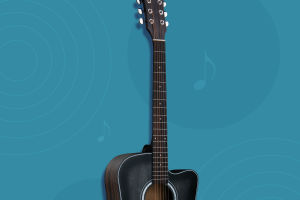Slim and open, these hangers easily file away pants in your closet. The design also makes clothing easier to grab off the rack as you dash to get ready in the morning. Your clothes deserve the best treatment on and off your body. Using hangers, your clothes shine.
Shopping for hangers can be a dismaying task. Each garment has its own hanger requirements — ranging from type to material — and if you store your valuables on the wrong hanger, they can end up stretched out or warped beyond repair. There’s also the matter of space: Depending on the size of your closet, there are hangers and organizers you can invest in to maximize storage space to help you avoid shoving clothes into a drawer and wrinkling them
Hang: Flowy Fabrics
First, let's start in your closet. Which clothes absolutely belong on a hanger? Anything composed of flowy fabrics, says DeMorrow. "Anything made from silk, chiffon, or other 'flowy' materials—commonly dresses or blouses—[should be hung]," says professional organizer Melissa Keyser.
Hang: Linen
Linen is notorious for becoming wrinkled—which is why it's much better to hang any linen pieces in your closet.
Hang: Pants
While jeans don't necessarily need a place in your closet, you should definitely plan to hang all your other pants (like dressier slacks).
Hang: Blouses
If you don't want your nice blouses to be full of creases and annoying wrinkles, make sure to keep them on a hanger.
Hang: Jackets
Jackets are large pieces—and if you try to fold them and put them in a dresser, not only will it cause wrinkles (and potential damage to the structure of the piece), but it will also monopolize most of your space. "Jackets of any kind should be hung," says Reynolds.
Hang: (Most) Dresses
Most—but not all—of your dresses deserve vertical space in your walk-in. "Dresses, for the most part, should always be hung," says Reynolds.
How to shop for hangers
If there’s one thing that you keep in mind while you organize and pick out hangers, it should be that wire hangers have no place in your closet. “Wire hangers are free for a reason,” Rosenthal said. “They bend easily and stretch out your clothing if the piece is hung on the hanger for too long. The hangers also do not prevent clothing from slipping off, so clothing always ends up on the floor.”
How to shop for shirt hangers
The most important aspect of any shirt hanger, according to Rosenthal, is a non-slip feature. “When hanging shirts, a non-slip option like velvet or something like a wooden hanger with a non-slip pad on the edge works great,” she said. Hangers with notches or hooks on them are also useful for garments with thin straps.
How to shop for pants hangers
Clip hangers are popular for hanging skirts and pants, and Ypma said that they can be a good option if you have ample closet space.
How to shop for hangers for sweaters
Experts advised against hanging sweaters on normal hangers. “They are just too easily stretched or damaged when they are hung,”
Instead of putting clothes on a hanger one by one, the new hack means you can hang a pile of t-shirts, buttoned shirts and tops in one go in no time at all.
To start, simply weave your hand through the head hole of one shirt and then one through of the shirt’s arms.
Move the shirt as high up your arm as possible, before repeating the same process with all the shirts and tops you’d like to hang.
Once you have your shirts placed along your arm, they’re ready to go onto coat hangers.
To do so, pick up a hanger and then drag the last shirt on your arm back towards your hand and over the hanger
The result is a perfectly hung shirt, with minimal effort.
You can then repeat the process with the remaining shirts on your arm until they are all on hangers.


